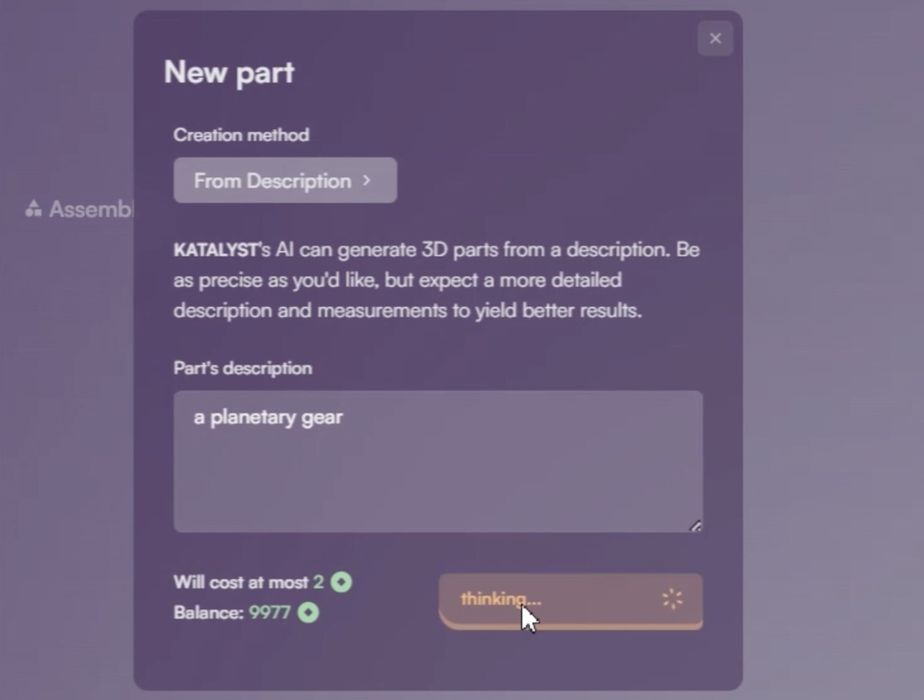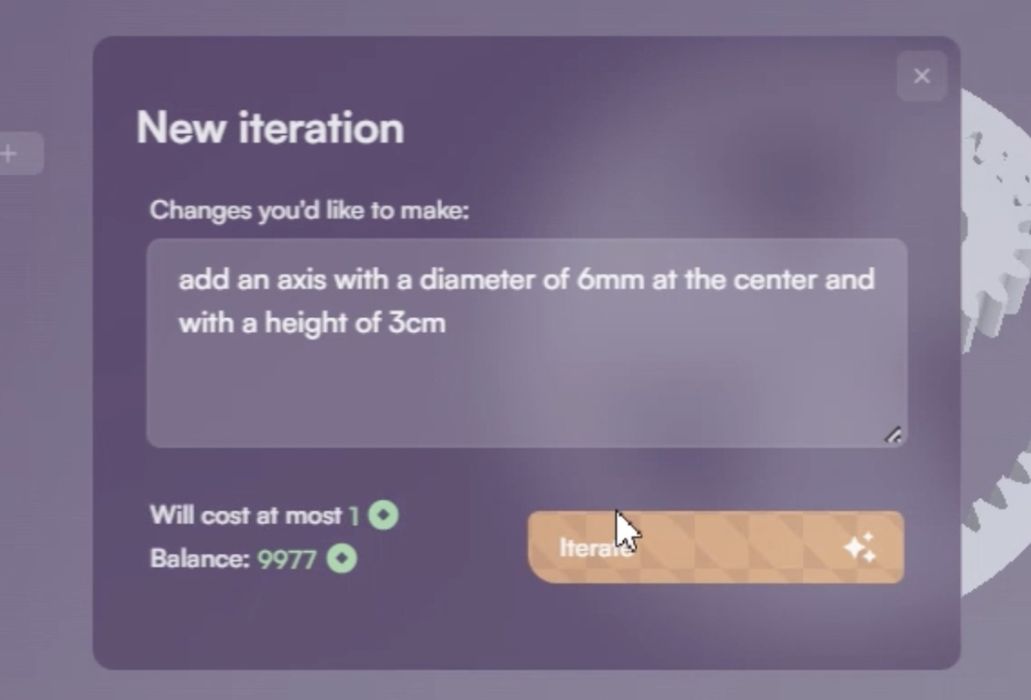
A new text-to-3D tool has surfaced with a big difference: it’s parametric.
AI tools are exploding these days, with the new LLM technology being applied to countless applications, some useful, some entertaining and some simply pointless. Our 3D print space is also where much AI exploration is taking place.
While AI has been successfully used to perform real time monitoring using cameras in 3D printers, there are many other possible applications. One of the most important would be the ability to near-instantly design 3D parts for printing. The idea is to generate a 3D model from a text prompt, like “make me a 3D model of a prowling cat”.
There are several tools now emerging that can actually do this. The technology is called “text to 3D”, similar to the more widely known “text to image” technology you may have seen with DALL-E or MidJourney.
I’ve tried several of these experimentally. I even generated a 3D scare-cat to discourage ducks from nesting in my backyard (unsuccessful as the ducks ignored it, but makes for a good story).
The problem with all of them is that they are organic shapes. That’s fine if you’re printing a scare-cat, but not optimal if you hope to make parts that actually fit together.
If only there were a “text-to-CAD” tool that could generate parts with precision dimensions and other properties.
Now it seems there is one coming from KATALYST LABS.
The company seems to be quite new, as their domain was registered only last month. However, they have clearly been working on this project for some time.
Their service has not yet been released, but they have provided a video demo of it in action, and it looks quite impressive.

The user interface is quite different from the normally awkward procedures used by most of the text-to-whatever services. Many require you to sign up for a private Discord server and fire public messages at bots. That’s not the case at all with KATALYST, as it instead provides you with a text and visual interactive window.
There’s a box for entering prompts, and a 3D visualization of what is being designed. In the demonstration video the session begins with: “planetary gear”.
And KATALYST generates exactly that. We don’t know how long it took to do, however, due to the magic of video editing.

There’s more magic: the next prompt is: “add an axis with a diameter of 6mm at the center with a height of 3cm”. Hit the “generate” button and it does that, too.

This seems to be the workflow: just keep asking KATALYST to change things in the work-in-progress and it gets it done. There appears to be a log of changes, which they call “Iterations”.

There is also the ability to textually enter parameters, as you can see here. This makes the system parametric, and thus able to produce usable parts.
When the part’s design is complete, it’s possible to export the 3D file for the model. The interface in the video selects STL as the export format, and they say there are other formats like STEP and DXF.
KATALYST LABS doesn’t say much about their upcoming service, so we have to read between the lines in their video to see what they’re up to.

One observation is the presence of “Assemblies” on the main window. This implies that one could potentially design a series of parts and then put them together into mechanical assemblies. That isn’t shown in the video, so perhaps it’s a future feature.
Another observation is the points system. In all the prompts shown in the video there is a point “cost” for the prompt. Most of the prompts cost one or two points, and whoever’s running the demo has 10,000 points to play with. We have no idea of the cost per point, but that allows KATALYST LABS considerable flexibility. They can also add new and highly complex prompt features and bump up the point cost for them.
That’s about all we know about KATALYST, which isn’t much. But it is extremely interesting.
If they succeed, they might finally break through the CAD barrier and open up 3D printing to a far wider audience. CAD tools have been around for many years, but they are often costly and take considerable time to learn. That isn’t compatible with the vast majority of the population.
In their announcement, they explain:
“Our roadmap includes integrating structural simulation capabilities and expanding our dataset to generate more sophisticated parts.”
I’m interested to see where KATALYST goes next, and in particular want to see the points pricing.
Via KATALYST LABS and Ghost
